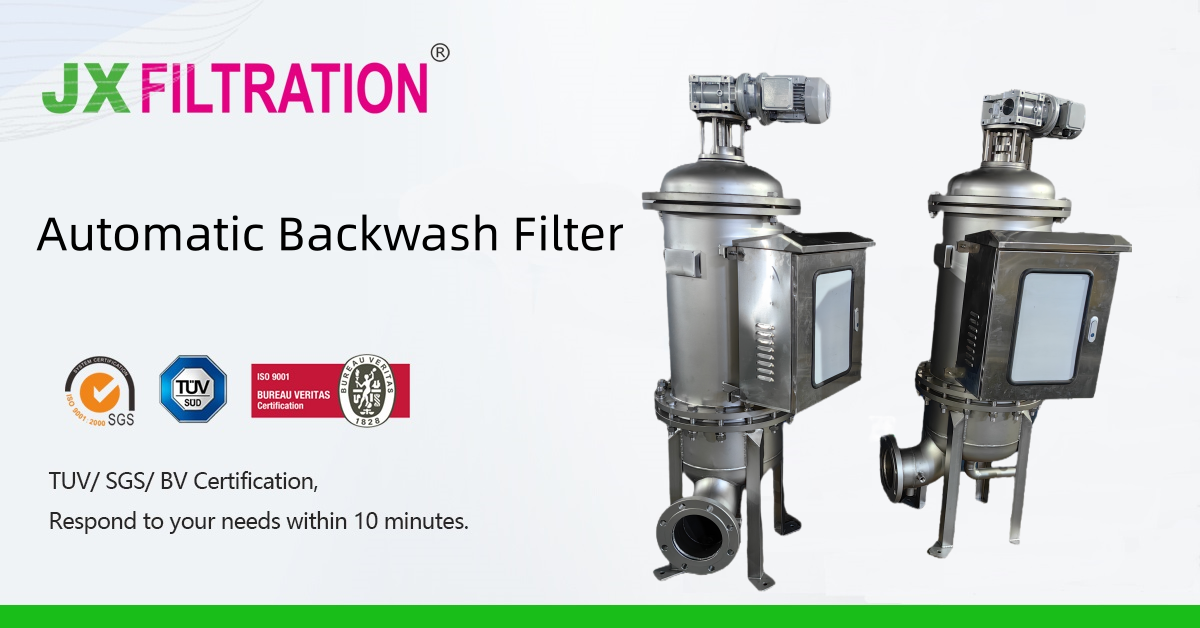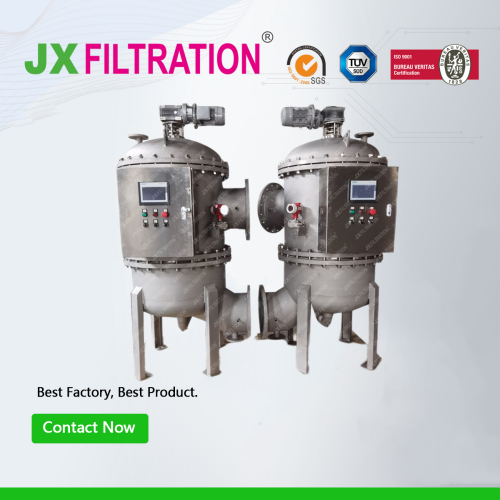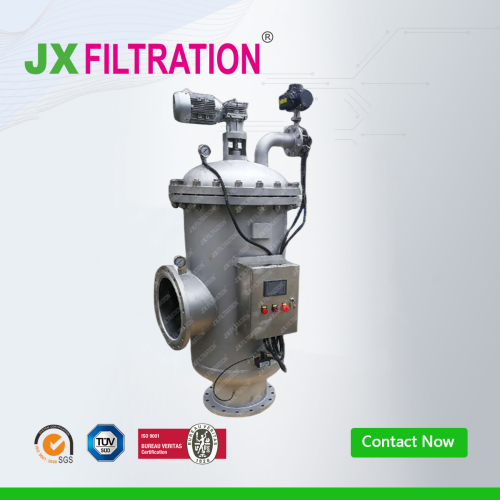How to Clean a Backwash Filter
A backwash filter is a filtration device that automatically removes dirt from the filter element by reverse flushing. It primarily consists of a filter housing, filter element, inlet valve, and outlet valve.

During operation, water enters the filter through the inlet valve, passes through the filter element, and exits through the outlet valve. During this process, dirt is trapped inside the filter element, reducing the pore size and affecting filtration efficiency. Regular cleaning of the filter element is necessary to restore its normal filtration function.
Depending on the working environment and the material of the filter element, the following cleaning methods can be chosen:
-
Manual Cleaning: For simple backwash filters, manual cleaning can be performed. First, close the inlet and outlet valves, then activate the backwash button to flush the inside of the filter element from the outside. This method is suitable when the filter element surface is relatively dirty or lightly soiled.
-
Automatic Cleaning: For more complex backwash filters, automatic cleaning can be used. This method typically requires connection to a water and power source, with a controller managing the cleaning process. Automatic cleaning can be set to trigger at preset intervals or based on flow rate, making it ideal for heavily polluted filter elements or systems that require continuous operation.
-
Chemical Cleaning: For special materials such as ceramic or metal filter elements, chemical cleaning may be necessary. This method involves using specific cleaning agents as instructed in the product manual. Chemical cleaning can effectively remove stubborn dirt, but care must be taken to avoid corrosion of the equipment by the cleaning agents.
To ensure the backwash filter remains in optimal working condition, follow these specific cleaning steps:
-
Based on the operating conditions and the lifespan of the filter element, determine the cleaning frequency. The filter element’s lifespan ranges from 6 months to 2 years, and it needs to be replaced regularly. The cleaning cycle can be adjusted depending on the water quality and the system’s load.
-
Determine the required water volume and cleaning duration for each cleaning session based on the cleaning method and the filter element’s material. Different methods and materials may require varying amounts of water and time to ensure thorough cleaning.
-
Record the cleaning schedule in the device’s operation manual or maintenance log for future reference and tracking.
Practical Steps:
- Close the inlet and outlet valves, disconnect the power and water supply to the system.
- Follow the appropriate cleaning procedure based on the selected method: for manual cleaning, activate the backwash button; for automatic cleaning, initiate the cleaning program; for chemical cleaning, add cleaning agents as per the manual’s instructions.
- Wait for the cleaning process to complete. Manual and automatic cleaning typically take 10-30 minutes, allowing enough time for the filter element to be thoroughly flushed. Chemical cleaning requires time for the cleaning agent to act (usually 5-30 minutes) to achieve the desired results.
- Inspect the cleanliness of the filter element. If necessary, repeat the cleaning process until satisfactory results are achieved.
- Open the inlet and outlet valves and restart the system.
- Repeat the above cleaning steps periodically until the filter element needs to be replaced.
Any Requirements, Contact Us Now!
Kris
Email/Teams: kris@filtrationchina.com
Mobile/Whatsapp/Wechat: +86 18980776200


